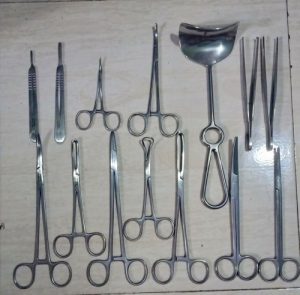Cesarean section is a surgical procedure performed with the help of delivery surgical instrument set when vaginal birth is not possible or when it risks endangering the health of the child and / or the mother-to-be. It can be either programmed in advance during pregnancy or decided urgently during childbirth.
What is Cesarean?
It is a surgical procedure that involves extracting the baby through a transverse incision at the pubic level. Perfectly mastered, it is performed under loco-regional anesthesia, which allows the mother to be fully aware and the father to be present.
The scheduled cesarean
Certain medical elements may endanger the health of mother and child and make a vaginal birth impossible. They may cause the obstetrician to schedule a cesarean delivery in certain situations:
Intrauterine growth retardation (IUGR): the medical team may choose to deliver the child with IUGR well before term to give it the best chance of improving its vital prognosis and of developing in an incubator, closely monitored by neonatal teams
Macrosomia: when the baby is too big and there is a foeto-pelvic disproportion, an incompatibility between its size in relation to the mother’s pelvis
Multiple pregnancies: when there are several babies
Presentation of the baby: certain breech, face or shoulder presentations may lead to planning a cesarean section
Placenta previa: a low inserted placenta can block the passage and may cause hemorrhage and fetal distress. This is why in 75% of cases, pregnancies with placenta previa result in deliveries by cesarean section.
Ovarian cyst or uterine fibroid: in some cases their presence can make it impossible to give birth by natural means
The scarred uterus: a history of cesarean sections or gynecological surgeries can weaken the uterine muscle and be contraindications
Maternal illnesses: hypertension, diabetes, heart disease may necessitate a caesarean section. Similarly, delivery by cesarean section is essential in the presence of viruses such as genital herpes or HIV in the mother, to avoid contamination of the child
The decision for this intervention must always be made on the basis of the balance of benefits and risks for the mother and the child. She needs to be discussed with the mother-to-be so that the doctor can explain to her why the Caesarean section is necessary and that she has time to come to terms with it.
Emergency Cesarean
Cesarean section can be decided on urgently during childbirth when there is:
- No cervical dilation despite the baby’s progression
- Lack of progression or engagement of the baby despite complete dilation of the cervix
- A proliferation of the cord: the cord is compressed and triggers suffering, fetal hypoxia
- An abnormal heartbeat of the baby or lack of movement of the baby on monitoring, signifying fetal distress during labor
- A hemorrhage or bleeding from the mom
- A twin pregnancy: the birth of the first child is normal, but the delivery of the second requires a cesarean section because of a bad position that could not be rectified.
Maternal illness: a mother with heart disease, for example, can become exhausted during a normal childbirth that is too long. This may cause the healthcare team to end the delivery with a cesarean.
For more details, please visit: jimymedical.co.uk
 Bloggers Trend Keeping You Up To Date
Bloggers Trend Keeping You Up To Date

